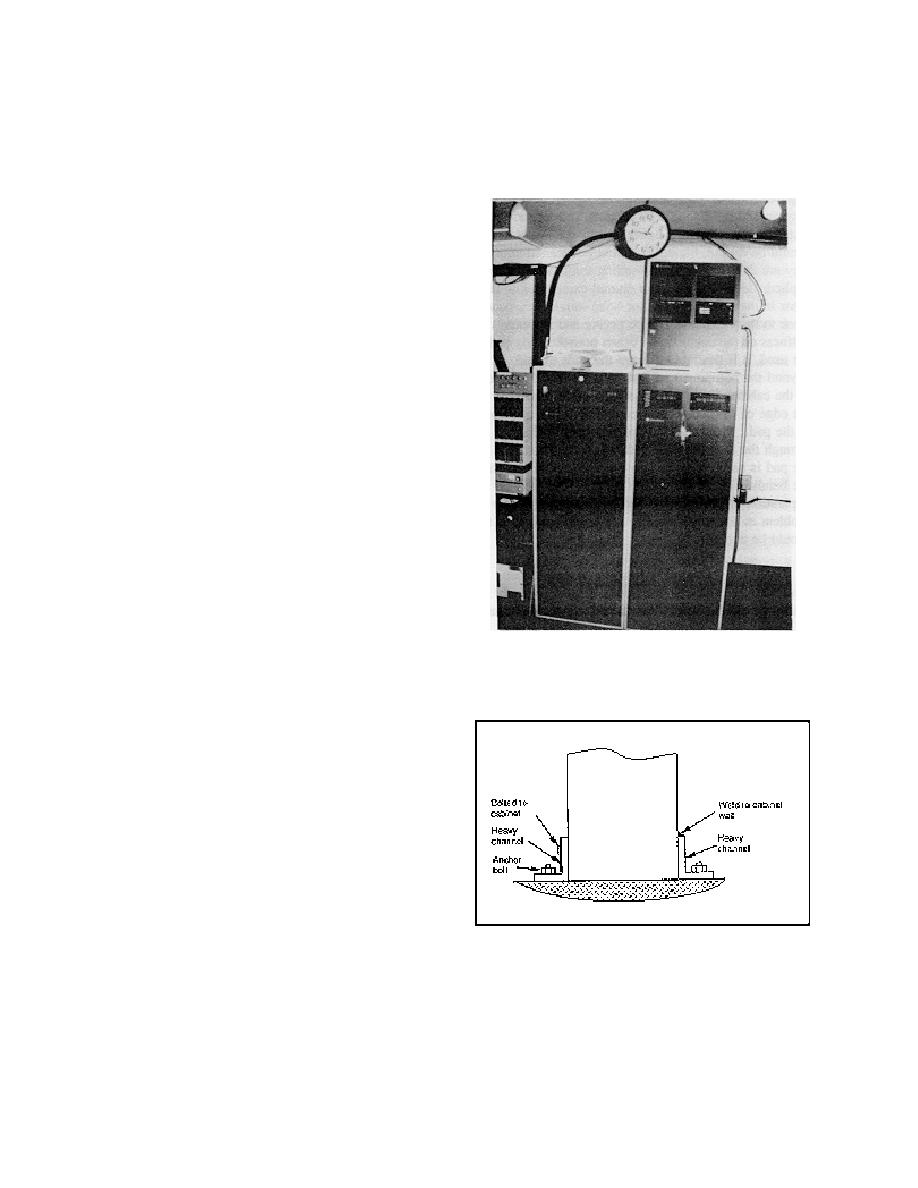
ETL 1110-2-533
30 Sep 94
be bolted to the floor adjacent to the ends of the
d.
Radio system for onsite communications.
inadequately anchored cabinet and then welded or
bolted to the cabinet. The load path between the
(1) The operation of the radio system for dis-
cabinet and the new anchor should be checked.
patching maintenance crews to evaluate and repair
systems is vital, particularly for a facility as large as
a dam.
(2) Base station equipment and other communi-
cation racks should be anchored and provided with
emergency power (Figure B-12). Circuit packs (cir-
cuit boards) in racks should be positively secured in
their card cages. A means for getting voice signals
into the base station should be assured. The micro-
phone used by the chief operator is often unanchored
so that it could fall, be damaged, or have its lead
wires pulled out in an earthquake. Repeaters are
usually necessary to reach all parts of the site, and
they should be anchored and provided with emer-
gency power. Ideally, repeaters within the dam
should be connected to the emergency power system.
If batteries are used for back-up power for repeaters,
a means for replenishing them should be provided;
that is, back-up batteries at the appropriate voltage
and capable of being connected to the system should
be available and charged. Many hand-held radios use
custom battery packs so that generally available con-
ventional batteries cannot be used. If special batteries
are used in hand-held radios, there should be a set of
back-up batteries that are on chargers connected to
the emergency power supply. The base station and
repeaters should be located so that they are protected
Figure B-12. Radio equipment cabinets must be
from water should there be a pipe break or leaking
anchored
from above the communications room.
(3) Unanchored radio equipment can tip over
causing damage to internal components or damaging
cables. Radio equipment is frequently small and is
not encumbered by numerous cable connections so
that it may be easy to move the equipment to install
expansion anchors below the cabinet. Equipment can
also be anchored to structural walls, or if the equip-
ment is light-weight, it can be anchored to a non-
structural wall if care is used to distribute the load to
structural members within the wall.
(4) The retrofit of anchorage to installed equip-
ment can present special problems as it may be diffi-
Figure B-13. Retrofitted anchorage to cabinet that
cult to gain access to the base of the equipment to
is difficult to move
drill and install anchor bolts or move the equipment
(Figure B-13). Often, simple angle iron brackets can
B-9



 Previous Page
Previous Page
